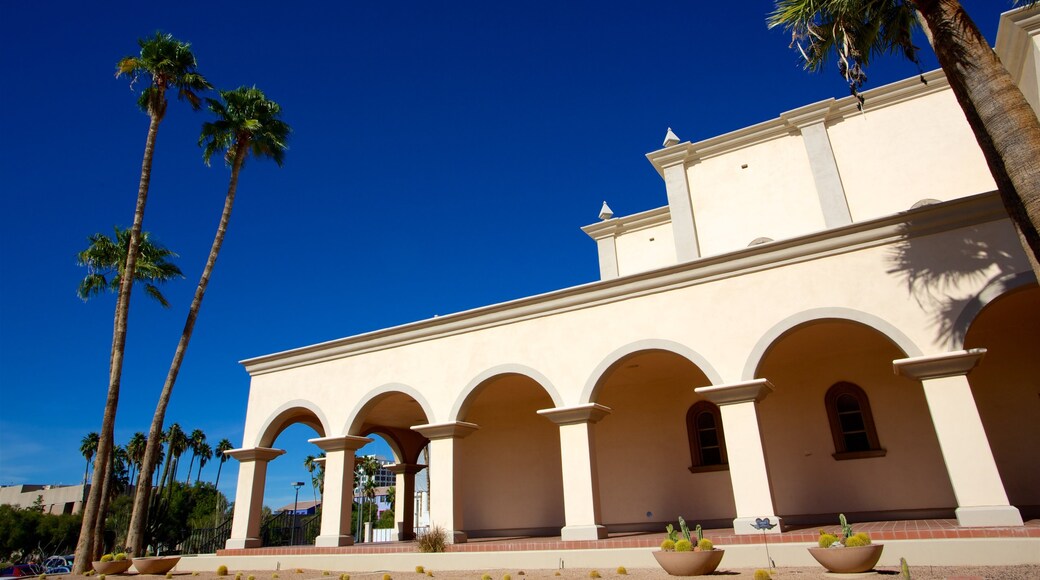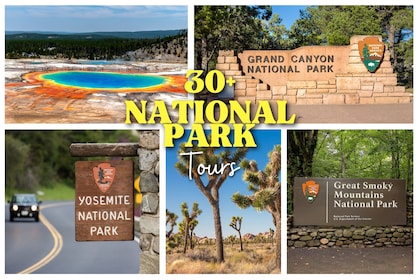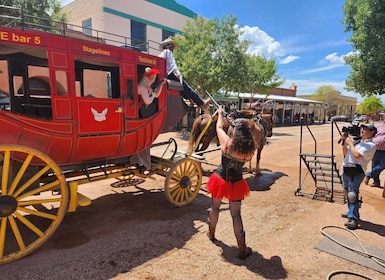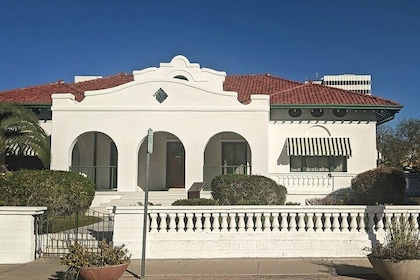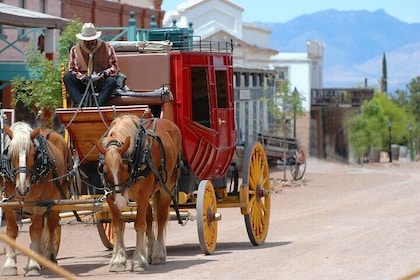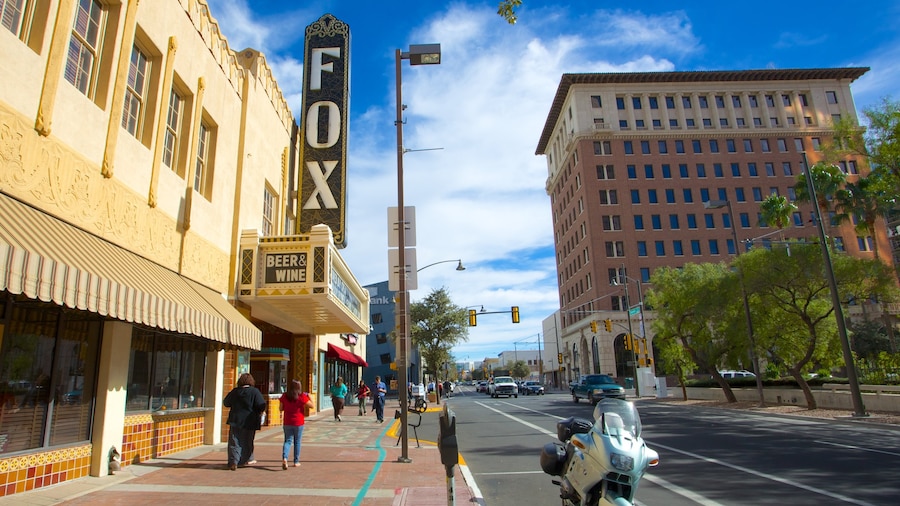Capture photographs of the Baroque spires of this impressive cathedral and watch a mariachi band performing traditional songs at a Spanish Mass.
Tucson’s largest church, St. Augustine Cathedral, has served the city’s English- and Spanish-speaking communities for more than a century. The cathedral was first constructed in 1868 however, its design was deemed as it didn’t allow for enough space and in 1928 was altered to better suit the Mexican community it served. Today, its towering spires and intricate façade highlight St. Augustine Cathedral’s Mexican Baroque style. Look for depictions of local plants, including yucca and saguaro, as you walk around its exterior.
St. Augustine remains an active cathedral and is not always open to the public. While visitors are welcome to explore its impressive and cavernous nave outside of Mass times, open hours are often sporadic. Participate in the daily midday Mass to ensure you are able to see inside.
Admire the decoratively painted ceiling and the murals that adorn its walls. The cathedral has a capacity of 1,250 people. Along its sloping floor, all seats have a view of the altar and the church’s grand organ. Visit on a Saturday evening to listen to the organ in use during the weekly Vigil Mass.
Sundays are the busiest days at the cathedral and present a range of different services. Arrive early for a Spanish-language Mass that features a mariachi band playing traditional songs. This is a great opportunity to see Tucson’s Mexican community celebrating a fascinating heritage.
Afterward, capture photographs of the cathedral’s exterior against Tucson’s downtown backdrop. The cast stone façade is a highlight of the cathedral and is centered on the coat of arms of Pope Pius XI, the pope at the time of its original construction. Look for the horned-toad lizards included in the façade’s design.
St. Augustine Cathedral is located in Downtown Tucson. Reach the cathedral on foot from the city’s central train station or arrive by bus or taxi. Some parking is available in the area but becomes scarce during Mass times. There is no fee to visit the church.



